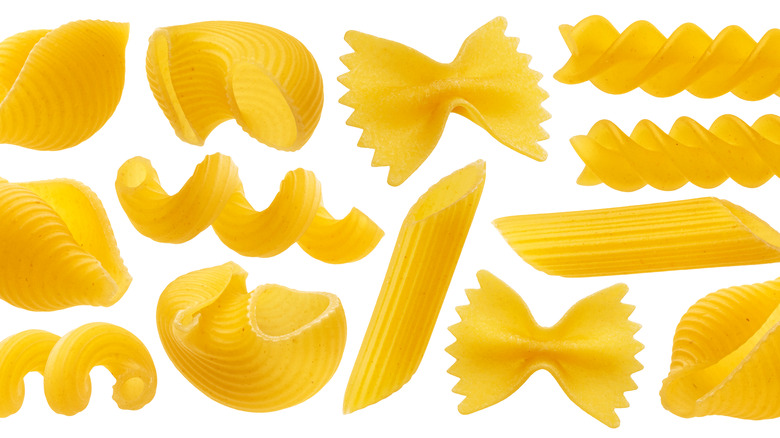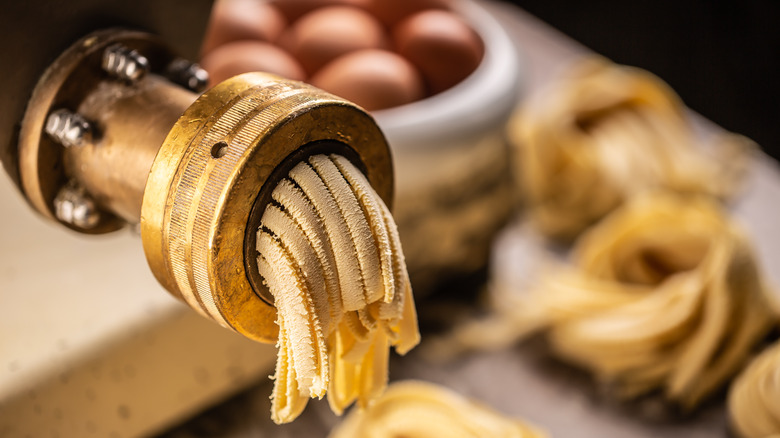The Real Reason The Drying Process For Pasta Is So Important
You might think there's no food less interesting than dried pasta, but you'd be wrong! Not only can you spend hours learning about different shapes of pasta and what their Italian names mean, but it turns out the process of making dried pasta is more interesting and precise than you might think. And wow, does the process matter in terms of what ends up on your plate. Paesana tells us that fresh pasta isn't inherently superior to dried pasta, but in fact fresh and dried have different purposes in the kitchen. Fresh pasta is best for delicate applications, when you don't want your pasta to be al dente.
Dried pasta is better suited when you want a sturdier pasta, perhaps for a Ragu alla Bolognese. And it turns out that even dried pasta is more complicated than you might imagine. Dried pasta is typically produced in one of two ways: it's either extruded from dies that are Teflon coated or from dies made of bronze, which according to Caputo's is the more traditional method. Bronze cut pasta performs differently than Teflon cut pasta, primarily because the exterior of bronze cut pasta is rougher, which means sauce adheres better. Part of the reason for that difference is the way the pastas are dried.
Pasta must be dried very carefully
According to Italian Food Tech, after pasta has been processed and extruded, its moisture content is typically around 31%. The goal of drying pasta is to reduce the moisture content to about 12-13%, both to make the pasta stable and permit it to retain its shape, but also to prohibit the formation of mold. Pasta that has been cut using Teflon dies is typically flash dried, Marcelli Formaggi explains, while bronze cut pasta is dried more slowly.
The slower method of air drying bronze cut pasta is both more traditional and produces better quality pasta. Flash drying can cause pasta to become excessively brittle and susceptible to cracking and breaking. Slow drying pasta is critical for ensuring that the interior and exterior of each piece of pasta is safely dried, while preserving the pasta's structural integrity. Air flow, humidity, and temperature are all carefully monitored to achieve perfect pasta. Seeking out bronze cut, air dried pasta ensures every bite of your dish will hold the ideal amount of sauce.

